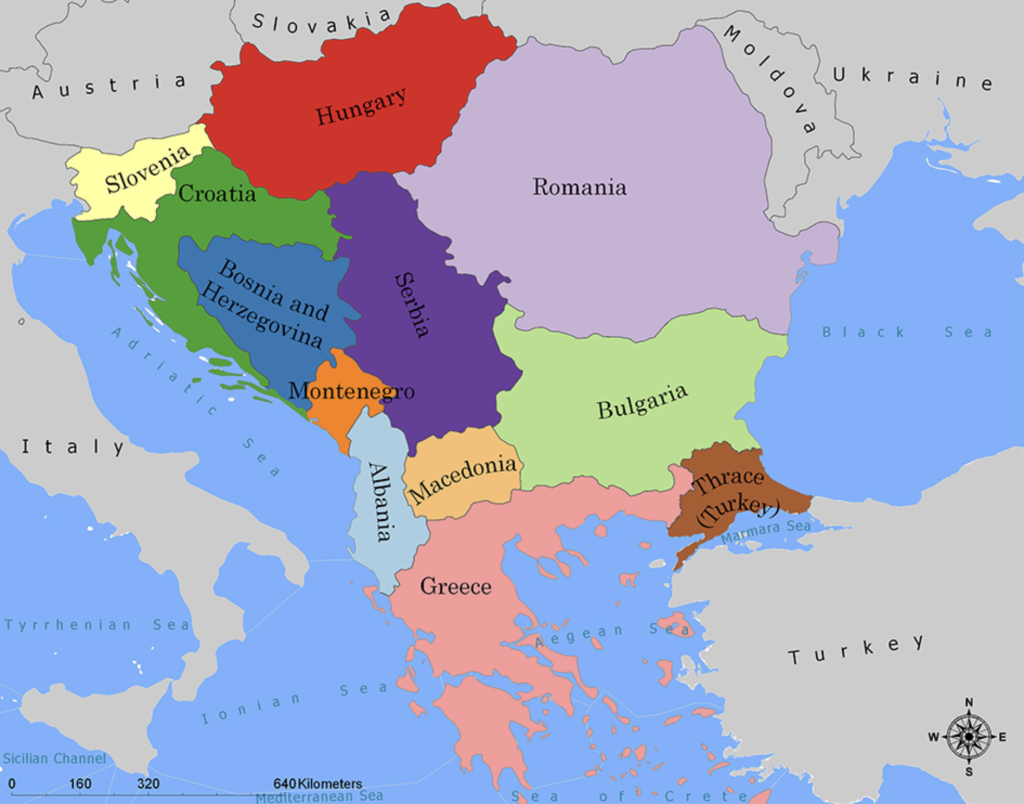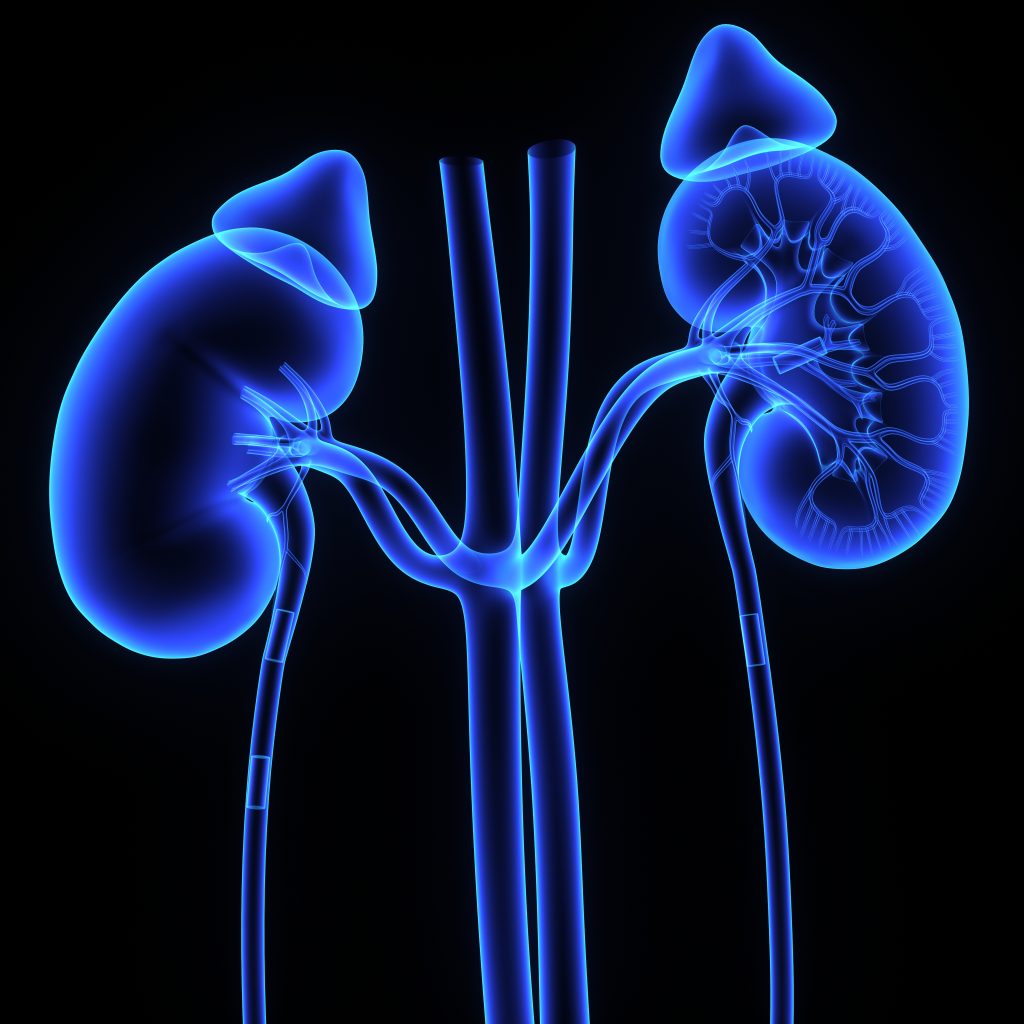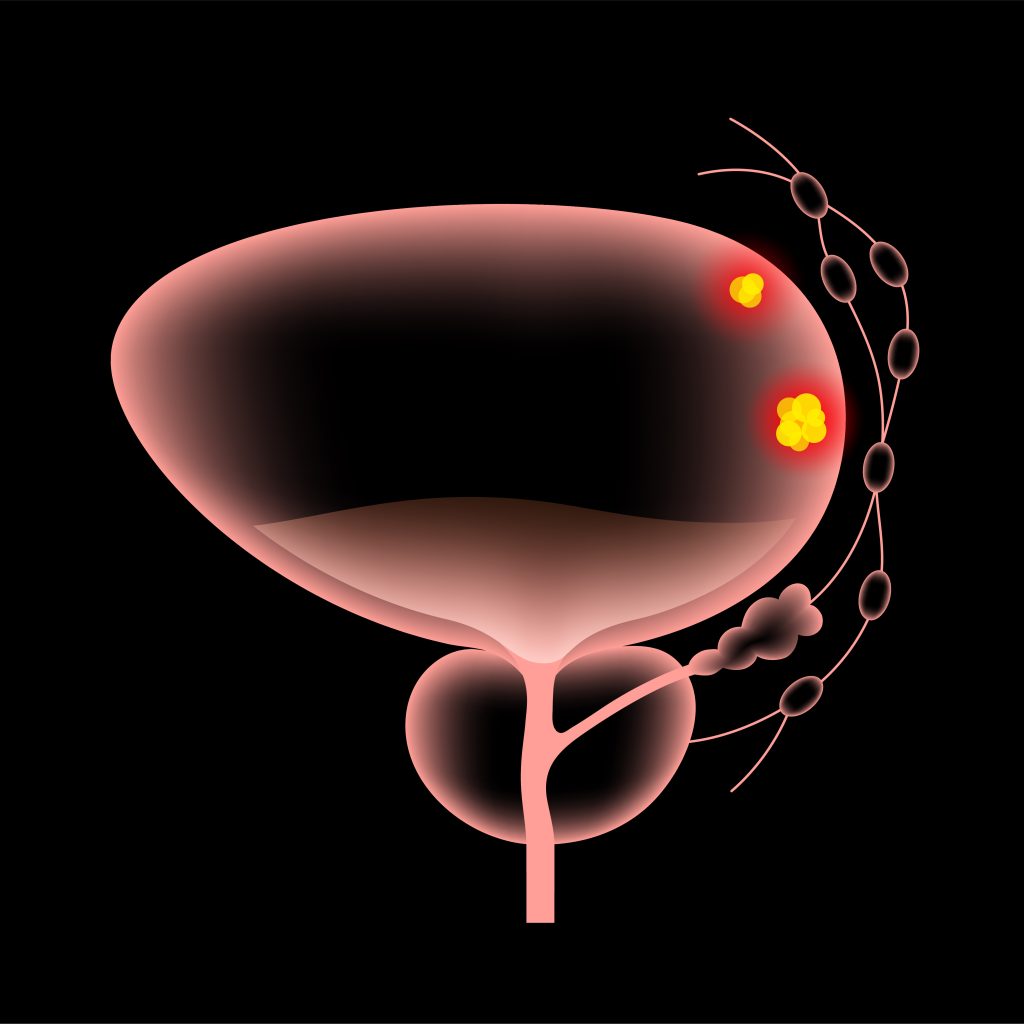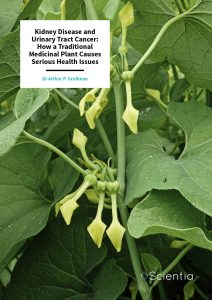Professor Arthur Grollman | Professor Francis Johnson – Kidney Disease and Urinary Tract Cancer: How a Traditional Medicinal Plant Causes Serious Health Issues
This is a recounting of a scientific investigation into a mysterious but potentially deadly disease that first came to light principally in the Balkan states, and then several Asian countries. It manifests itself first as a nephropathy resulting in the destruction of kidney tissue often followed by a cancer of the upper urothelial tract. Professors Arthur Grollman and Francis Johnson at Stony Brook University have achieved a revolutionary understanding of the molecular biology, epidemiology and root cause of both diseases. Their findings have critical implications for medical and scientific communities, as well as the general public.
A Rare Kidney Disease Endemic to the Balkans
Within the region of the Balkans, there is an unusual disease known as Balkan endemic nephropathy (BEN). People who live in this southeast area of Europe have an unusually high risk of developing chronic renal (kidney) disease. It progresses slowly so that only those aged 20 years old show symptoms, but once it manifests itself, the outcome can be disastrous. Accompanying these symptoms is an excess of protein in the urine (proteinuria), which goes unnoticed until sickness occurs and certain clinical tests are done.
Often, people suffering from BEN will develop tubulointerstitial fibrosis, which is the accumulation of collagen and other protein fibres in the spaces between the cell membranes of the kidneys’ tubules. Additionally, in the advanced stages of the disease, the kidneys shrink so dramatically that they are only 2–3 cm across, compared to a healthy 10–12 cm. Eventually, this leads to renal failure and if renal dialysis is not duly administered, BEN is universally fatal. Adding even further to the burden of this disease, half of the people who have BEN also develop cancer. These tend to be urothelial carcinomas of the upper urinary tract (UUC).
One of the most unusual aspects of BEN is its specific and unchanging geographic distribution. It was first described by a scientist in 1956 after physicians in certain areas of Bulgaria had noticed an abnormally high prevalence of kidney disease. Following a large study of residents, it was seen that people in specific villages were at very high risk. But more than that, it could be seen running in families and even within households. Health science experts gathered through the World Health Organization and eventually named and classified Balkan endemic nephropathy as a new disease.
However, it was not until several years later that theories for the cause of BEN were propounded, studied and confirmed. This has been the work of Professors Arthur Grollman and Francis Johnson in the Renaissance School of Medicine at Stony Brook University in New York, USA. Together, they have conducted ground-breaking research into the aetiology (cause) of BEN, and in the process, discovered a vital link with a similar disease in Asia.

Finding the Acidic Culprit of BEN
Professor Grollman’s initial interest was sparked by a study of a group of healthy Belgian women who had developed chronic kidney disease with many requiring dialysis, transplantation and cancer care. The factor linking them together was a slimming regimen they all followed involving a mixture of Chinese herbs and the disease was dubbed Chinese Herbs Nephropathy (CHN). One of these plants was Aristolochia clematitis (A. clematitis). Studies had shown that when the aristolochic acid within this plant is ingested, it is metabolised into a product that eventually causes cancer.
Picking up on the similarities between BEN and CHN, Professor Grollman and his team set out to investigate the potential links between A. clematitis and nephropathy. In Croatia, they found that the plant commonly grew in crop fields, as it was considered a harmless weed. Subsequently, traditional wheat-harvesting and milling methods allowed the seeds of A. clematitis to end up in the locally baked bread. The researchers concluded that when a person ingests aristolochic acid through their diet, and if they have a pre-existing genetic sensitivity, they are at high risk of nephropathy and UUC. Importantly, they determined that BEN and CHN are actually the same disease, which they called Aristolochic Acid Nephropathy (AAN).
The next step in understanding AAN was to clarify how aristolochic acid interacts with the body physiologically and why this leads to severe health issues. To do this, Professors Grollman and Johnson needed to draw on their chemical-biology expertise.

Traditional Chinese medicines
The DNA Mutations That Lead to BEN
Metabolism of aristolochic acid results in a reactive intermediate which reacts with DNA to create an adduct. The latter is the name for a basic unit of DNA that is attached to a carcinogenic chemical, and this particular adduct is referred to as AL-DNA. It provides a significant connection between exposure to and ingestion of aristolochic acid and subsequent kidney disease and cancer.
During Professor Grollman and Professor Johnson’s investigations, they discovered unusually high levels of AL-DNA adducts in the tissue of patients residing in areas where nephropathy and UUC were endemic. Building on this observation, the researchers explored how these adducts arise and what their consequences are, on a molecular and genetic level.
Professors Grollman and Johnson synthesised AL-DNA adducts and introduced them into cells to see how they would be processed by the cell’s machinery. Although this damage to the DNA was mostly corrected by the cells themselves (a normal cellular cancer-preventative measure), some was still processed for replication. The new strands that were coded for by the damaged DNA frequently contained A to T transversion, a point mutation on DNA whereby an arginine base is incorrectly replaced by a tyrosine base.
Critically, the research team discovered that this mutation often takes place on the gene, TP53. This is a tumour-suppressor gene and the protein that is synthesised from it plays a vital role in preventing the development of cancer. In healthy cells, it achieves this by preventing the uncontrolled cell division characteristic of cancer, but when it is mutated or missing, it cannot fulfil its duties.
These are fascinating findings because they demonstrated that aristolochic acid is the disease-causing agent for both endemic neuropathy and UUC and uncovered unique biomarkers of the disease. Biomarkers are biological measures or characteristics that can reveal the state of a disease. In this case, the markers are the AL-DNA adducts in the kidneys and the specific TP53 mutations induced by the metabolic products of aristolochic acid and which can be measured.

Illustration of the kidneys
Traditional Herbal Remedies Could Have Serious Health Consequences
Professors Grollman and Johnson then utilised their new biomarkers to understand how widespread globally the nephropathy and UUC caused by aristolochic acid actually was. Aristolochia plants have been used in traditional Chinese medicines for thousands of years, with most people being unaware of their toxicity. To investigate whether this was causing an unrecognised global health issue, the researchers selected the country with the highest incidence of chronic kidney disease and UUC worldwide for further studies – namely, Taiwan.
Aristolochia herbal medicines are commonly used in Taiwan (and elsewhere in Asia), leading to an estimated one-third of the country’s population ingesting large amounts of aristolochic acid. They began a study to ascertain whether Aristolochia in these traditional medicines was indeed the culprit for the unusually high prevalence of kidney disease. When the researchers tested patients with UUC, they discovered over half of those with TP53 mutations showed the biomarker A to T transversion in almost identical patterns to the residents in the Balkans. Many of the patients also had AL-DNA adducts in their kidneys.
This groundbreaking research conclusively revealed that the extensive exposure to aristolochic acid in Taiwan had led to a significant proportion of the nephropathies and UUC identified there, solidifying the evidence that BEN, CHN and AAN are all the same ailment. Professor Grollman notes that while this finding is an important one, it is also a worrying one because the damage done to the kidneys and renal DNA by aristolochic acid is irreversible. As these effects only physically present themselves decades after initial ingestion of the herb, banning it in herbal medicines will not have an impact on the incidence of AAN and UUC for at least 20 years, but should prevent further cases from arising beyond this time period.

The extent of Aristolochia herbal medicine usage in mainland China is similar to that in Taiwan, and Taiwan formerly imported the herb from there. Professor Grollman estimates that the thousands of tonnes of Aristolochia produced in China each year could be sufficient to cause disease in 300 million people residing within the country.
However, Taiwan is not the only country that imports the traditional medicine, and around 10% of the Aristolochia produced in China is exported around the globe to Chinese ex-patriate populations, including that in the USA. The continuation of using the herb as a remedy is putting hundreds of thousands of people across the world at risk of chronic renal disease and upper urothelial cancer.
The research of Professors Grollman and Johnson has clearly shown that the ingestion of aristolochic acid, whether intentionally or otherwise, has serious global health implications. Their work has demonstrated that using epidemiological approaches coupled with chemical biology methods can produce novel and crucial findings for health. They continue to build on their research as they study which genes make a person more susceptible to aristolochic acid-induced diseases, how biomarkers can be put to use to predict those most likely to become ill, and how their work can now be utilised for global health interventions.
SHARE
DOWNLOAD E-BOOK
LISTEN TO THE AUDIO
REFERENCE
https://doi.org/10.33548/SCIENTIA811
MEET THE RESEARCHERS

Dr Arthur P. Grollman
Renaissance School of Medicine
Stony Brook University
New York, NY
USA
Dr Arthur Grollman received his BA in Chemistry at the University of California and his MD from the Johns Hopkins School of Medicine. Following further clinical training at Johns Hopkins, he conducted research at the National Institutes of Health, then joined the faculty at the Albert Einstein College of Medicine. Dr Grollman was founding Chairman of the Department of Pharmacological Sciences in the Renaissance School of Medicine at Stony Brook University, serving simultaneously as Attending Physician at the Stony Brook University Hospital. He holds the titles of Distinguished Professor of Pharmacological Sciences, Glick Professor of Experimental Medicine, and Director of the Leo and Judy Zickler Laboratory of Chemical Biology.
CONTACT
E: arthur.grollman@stonybrook.edu
W: https://renaissance.stonybrookmedicine.edu/lcb

Dr Francis Johnson
Renaissance School of Medicine
Stony Brook University
New York, NY
USA
Dr Francis Johnson received his BSc and PhD from the University of Glasgow before completing a postdoctoral fellowship at Boston University. He then joined the Eastern Research Laboratory of the Dow Chemical Company before participating in the founding of the Division of Medicinal Chemistry at Stony Brook University. Dr Johnson is now Professor of Pharmacological Sciences and Professor of Chemistry at the same university. He has continued and extended his extensive studies on the total synthesis of natural products.
CONTACT
E: francis.johnson@stonybrook.edu
W: https://renaissance.stonybrookmedicine.edu/lcb
KEY COLLABORATORS
Bojan Jelaković, University Hospital Centre Zagreb, Croatia
Jovan Nikolić, University Hospital Centre Zagreb, Croatia
Yeong-Shiau Pu, National Taiwan University Hospital, Taiwan
Chung-Hsin Chen, National Taiwan University Hospital, Taiwan
Kathleen Dickman, Stony Brook University, USA
Andrea Fernandes, Stony Brook University, USA
Charles Iden, Stony Brook University, USA
Masaaki Moriya, Stony Brook University, USA
Shinya Shibutani, Stony Brook University, USA
Thomas Rosenquist, Stony Brook University, USA
Jiri Zavadil, International Agency for Research on Cancer, World Health Organization
FUNDING
Fogarty Institute
National Cancer Institute
National Institute for Environmental Health Sciences
Marsha & Henry Laufer Foundation
Leo and Judy Zickler
FURTHER READING
AP Grollman, Aristolochic Acid Nephropathy: Harbinger of a Global Iatrogenic Disease, Environmental and Molecular Mutagenesis, 2013, 54(1), 1–7.
S Attaluri, RR Bonala, I-Y Yang, et al., DNA adducts of aristolochic acid II: total synthesis and site-specific mutagenesis studies in mammalian cells, Nucleic Acids Research, 2010, 38(1), 339–352.
G Bamias, J Boletis, Balkan Nephropathy: Evolution of Our Knowledge, American Journal of Kidney Disease, 2008, 52(3), 606–616.
V Batuman, Fifty years of Balkan endemic nephropathy: daunting questions, elusive answers, Kidney International, 2006, 69(4), 644–646.
AP Grollman, Aristolochic Acid Nephropathy: Harbinger of a Global Iatrogenic Disease, Environmental and Molecular Mutagenesis, 2013, 54(1), 1–7.
S Attaluri, RR Bonala, I-Y Yang, et al., DNA adducts of aristolochic acid II: total synthesis and site-specific mutagenesis studies in mammalian cells, Nucleic Acids Research, 2010, 38(1), 339–352.
G Bamias, J Boletis, Balkan Nephropathy: Evolution of Our Knowledge, American Journal of Kidney Disease, 2008, 52(3), 606–616.
V Batuman, Fifty years of Balkan endemic nephropathy: daunting questions, elusive answers, Kidney International, 2006, 69(4), 644–646.

REPUBLISH OUR ARTICLES
We encourage all formats of sharing and republishing of our articles. Whether you want to host on your website, publication or blog, we welcome this. Find out more
Creative Commons Licence (CC BY 4.0)
This work is licensed under a Creative Commons Attribution 4.0 International License. 
What does this mean?
Share: You can copy and redistribute the material in any medium or format
Adapt: You can change, and build upon the material for any purpose, even commercially.
Credit: You must give appropriate credit, provide a link to the license, and indicate if changes were made.
SUBSCRIBE NOW
Follow Us
MORE ARTICLES YOU MAY LIKE
Dr Matthew Williams | Personality and Pain: The Role of Personality Traits in Musculoskeletal Rehabilitation
The interactions between body functions, mental processes, and the social environment are critical in healthcare but all too often not fully understood. For example, the field of musculoskeletal health involves treatment of the muscles, bones, joints, and connective tissues that support and move the body. Whilst clinicians are great at evaluating the physiological aspects of musculoskeletal problems, they often miss how an individual’s psychological factors can influence treatment outcomes. Dr Matthew Williams, at Baylor University in the USA, is pioneering the application of personality psychology to musculoskeletal intervention strategies.
Professor Ramani Ramchandran | The Fascinating Roles of Cilia in Brain Blood Vessel Vitality
Delving into the intriguing realm of brain blood vessel development and the role of specialised cells is a challenging but critical step in better understanding neuro-vascular diseases in both children and adults. Professor Ramani Ramchandran, from the Medical College of Wisconsin in the USA, investigates cilia in the brain vasculature. It turns out that these microscopic hair-like projections found on the surface of certain types of cells have a far more interesting role to play in brain health than was initially thought.
Dr Nicholas Gascoigne | Harnessing the Immune System to Tackle Cancer
In a ground-breaking stride toward accessible cancer treatments, a revolutionary method for preparing immune cells has emerged. Dr Nicholas Gascoigne from the Yong Loo Lin School of Medicine at the National University of Singapore has helped develop an innovative approach involving T-cells, which holds the promise of transforming the landscape of cancer therapy, potentially making it more widely available and more effective.
Dr Bernie Garrett – Professor Timothy Caulfield | Revealing the Risks of Alternative Medicine
Alternative healthcare is growing in popularity, but like all healthcare, the use of such therapies is not risk-free. Dr Bernie Garrett of the University of British Colombia, Canada, works with colleague Professor Timothy Caulfield from the University of Alberta, to provide a voice of reason in the world of alternative medicine. While trying to understand what makes people choose these options, they are also shedding light on the risks associated with using such unconventional treatments.





